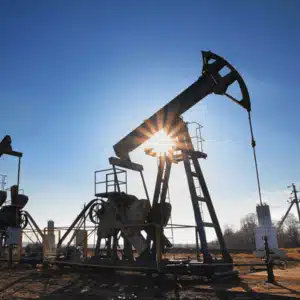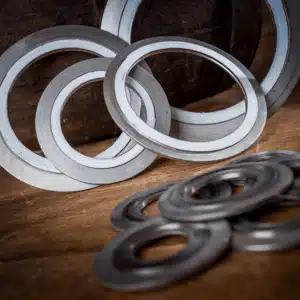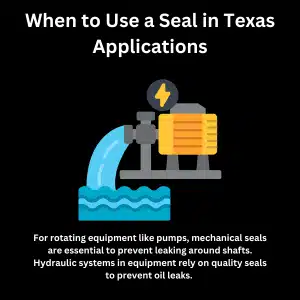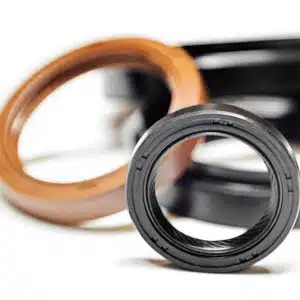
Seals vs Gaskets: Key Differences and Their Applications Explained
The Hidden Cost of Confusion in Texas Industrial Operations
If you’ve ever confused a gasket and a seal, you’re not alone. This common mistake affects many industrial applications in Texas, from engine parts in the Permian Basin to machined product lines in Houston. Though they perform similar functions, knowing the differences between a gasket and a seal is essential for preventing leaks and ensuring efficiency.
Gaskets work best between flat surfaces in static applications, while seals tend to operate in more active environments like rotating shafts or moving pumps. Understanding the difference between a gasket and a seal can avoid leaks, contamination, or equipment failure.
Texas companies lose millions annually because they misuse sealing products. Understanding shapes, temperature, and tolerances—whether it’s ring gaskets, static seals, or rotary seals—is vital to avoid costly shutdowns and to prevent leakage in valves, joints, or flanges.
When Confusion Becomes Costly: Real-World Texas Scenarios
A critical oil pump failure in the Midland Basin occurred when static seals were used instead of mechanical ones. This mistake cost over $100,000 in repairs and lost output—an avoidable failure if the correct two parts were used to prevent leakage in more active environments.
At a Texas automotive plant, engineers selected wrong gaskets for dynamic use. The result was a two-day production halt and nearly $2 million in lost output. These incidents highlight the importance of understanding the differences in gaskets and seals. Choosing the wrong seal or gasket compromises performance and fails at preventing leaks in demanding industrial applications.
Understanding the Fundamental Differences
Let’s clear up the confusion once and for all by understanding what each component is designed to do.
What Is a Gasket?
Static gaskets create barriers between two unmovable elements using a flat profile. Made from sheet gasket matters like rubber or metal, gaskets perform similar functions to seals in static applications. They prevent leakage in flat surfaces such as flanges, shafts, and engine parts. In industrial applications, gaskets provide tight surface contact to block gas or liquid flow, ensuring leak-free performance.
What Is a Seal?
Mechanical seals and rotary seals function in active environments by connecting components that move independently. These round seals differ from gaskets and are essential in dynamic applications where a ring or machined product must manage friction and movement, especially near a rotating flange or other critical points.
Seal materials like nitrile, neoprene, and other polymers must handle heat and vibration. Selecting the right material is generally crucial—whether it’s a seal or the wrong type of gaskets used in place of one.
Key Differences Between Seals vs Gaskets That Matter
The difference between a gasket and a seal might seem minor, but knowing the key differences between these two components is essential in industrial applications across Texas systems.
Gaskets are used in static applications where components remain fixed, while seals operate in environments involving shafts or rotating engine parts. This distinction matters for preventing leaks.
Gaskets are typically made from rubber, sheet, or metal, and conform to flat surfaces like flanges. Seals often have different shapes like round or O-rings, ideal for machined product movement.
Generally speaking, these two components differ by shape, material, installation, and function. Choosing the right sealing products helps manage pressure and maintain decency in engine industry applications.
When to Use a Gasket in Texas Operations
Gaskets are ideal for sealing static applications where components don’t move, offering a reliable static seal solution. In Texas refineries, gaskets are used between flanges on pumps, valves, and other applications where pressure, temperature, and vibration stress mating surfaces and flat surfaces.
For electrical enclosures, gasket performance is critical. Made from rubber, neoprene, sheet gasket, or other materials, these sealing products form static seals that prevent leakage of contaminants—helping protect sensitive systems from leaking or failure.
In natural gas processing, metal gaskets and ring gaskets provide robust seals, resisting extreme temperatures, and pressure. The correct gaskets and seals match mating surfaces and shapes, ensuring long-lasting sealing and performance in the most demanding Texas industry sectors.
When to Use a Seal in Texas Applications
For rotating equipment like pumps handling crude chemicals, mechanical seals are essential to prevent leaking around shafts. The intense operating conditions demand seals made from durable materials like rubber that can withstand chemical exposure and high temperatures, especially where a gasket would not be suitable and cannot easily replace a proper seal.
Hydraulic systems rely on a quality seal to maintain pressure and prevent leaks. These high-performance seals must maintain their integrity despite extreme conditions and stringent safety requirements, often working in conjunction with pumps, gasket-lined flange connections, and other critical parts where a failed seal can be costly and difficult to replace.
Material Selection: A Critical Decision for Texas Operations
Selecting the right material for both gaskets and seals tend to be important given Texas’s unique challenges of corrosive environments.
Gasket Materials
Gasket materials range from traditional options like cork and compressed fiber to advanced composites and metals. For Texas oil and gas applications, materials must withstand hydrocarbons, high pressure, and extreme heat.
Metal gaskets, including spiral wound and ring joint varieties, offer excellent performance in high-temperature, high-pressure applications common in Texas refineries.
Rubber and elastomer gaskets provide excellent sealing properties in general industrial applications, though material selection must account for chemical compatibility and temperature ranges.
Seal Materials
Seal materials must withstand dynamic conditions while maintaining their sealing properties. Nitrile rubber seals are common in general hydraulic applications, offering good oil resistance at moderate temperatures common in Texas industrial environments.
For higher temperatures or more aggressive chemicals, fluorocarbon seals tend to provide exceptional resistance.
When extreme temperatures or harsh chemicals are present, PTFE and other engineered polymers offer unmatched performance.
Manufacturing Processes That Ensure Quality
Understanding how gaskets and seals are manufactured helps explain their performance differences and importance to quality.
Gaskets are typically produced through processes depending on the material and application, with rubber being a common choice for sealing flat surfaces or components in pumps and compressors. Precision in manufacture is essential to ensure proper fit at each flange, hole alignment, and tightness at the joints where contaminants could enter if the gasket fails.
Seals, especially mechanical seals, often involve more complex manufacturing processes due to their dynamic applications. The precision required in producing these directly impacts their performance and lifespan in demanding Texas operations, particularly in rotating pumps where seal integrity is critical.
Both gaskets and a seal require quality control to ensure they’ll perform as expected in critical applications. For Texas operations, this quality assurance is non-negotiable—and generally applies equally whether selecting a gasket or a seal.
Making the Right Choice for Your Texas Operation
When selecting between gaskets and seals, consider the application requirements first. Is the joint static or dynamic? What pressures, temperatures, and media will the component encounter?
Consult with specialists who understand operating conditions and can recommend appropriate materials and designs.
Your Partner in Texas Sealing Solutions
Understanding the difference between gaskets and seals is surface level. Implementing this knowledge through proper component selection, installation, and maintenance is where real operational benefits are realized.
Our team of Texas-based sealing experts can help you navigate these choices. With decades of experience across Texas industries, we understand the unique challenges you face.
Contact us today to discuss your sealing challenges and discover how our Texas-proven solutions can enhance your operations. Let us help you select the right components for your critical applications.




